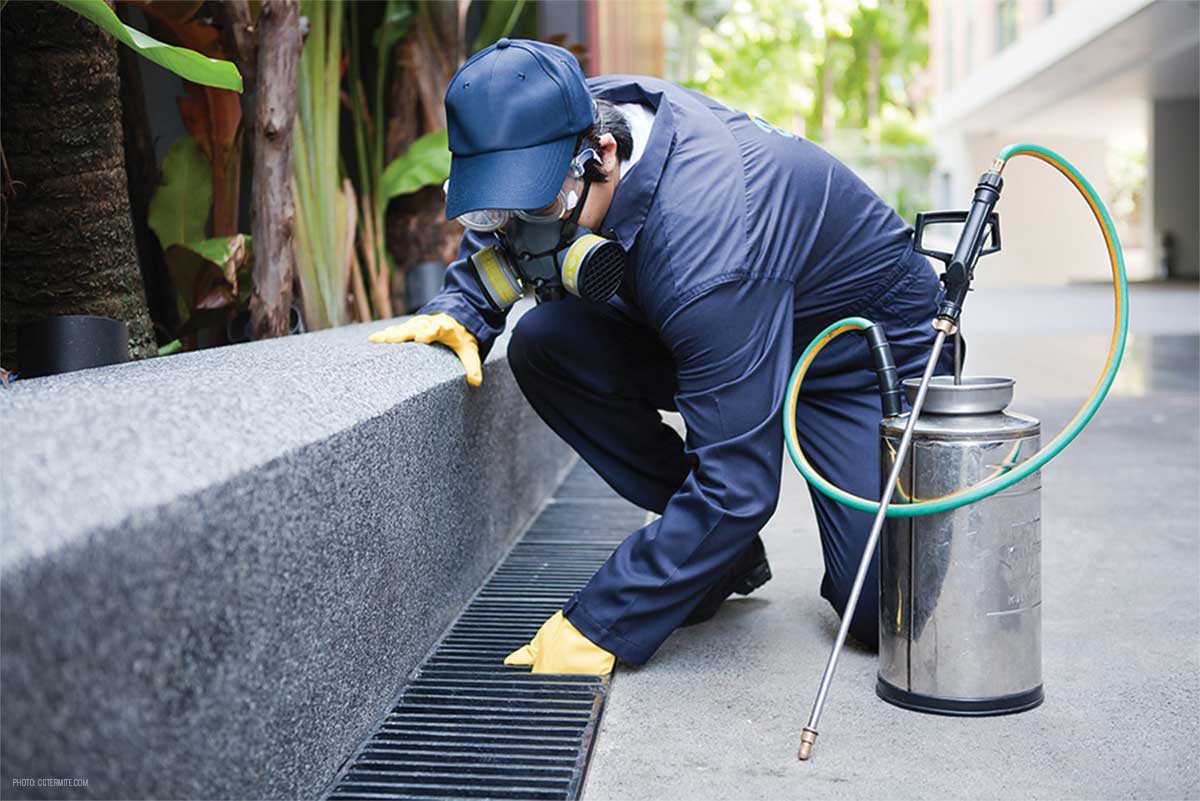Chicago Bug Infestation Removal: Quick and Reliable Pest Extermination
A Comprehensive Overview to the Different Kinds Of Bug Control Methods
With the myriad of bug control methods offered, it can be overwhelming to locate the most efficient solution for a details bug issue. In this extensive guide, we will certainly discover these different types of pest control approaches, providing insights right into their applications and benefits. By the end, you will certainly have a clearer understanding of which technique might be the finest fit for your bug control requirements.
Chemical Bug Control Approaches

One usual kind of chemical parasite control is insecticides. Pesticides are chemical compounds that are specifically formulated to kill or repel pests. They can be used in different kinds, such as sprays, baits, or cleans. Pesticides target particular parasites, such as insects, termites, or ants, and can be used both inside your home and outdoors.
Another kind of chemical bug control is rodenticides. These are chemical materials designed to manage populations of rodents, such as rats and computer mice.
Weed awesomes, additionally called herbicides, are one more type of chemical parasite control approach. Herbicides are created to selectively kill unwanted plants, known as weeds, without causing injury to desirable plants. They are frequently made use of in farming, landscape design, and horticulture to regulate the development of unwanted plants.
While chemical parasite control techniques can be highly reliable in eliminating pests, it is essential to use them judiciously and follow security guidelines. Overuse or abuse of chemical pesticides can have negative influence on human wellness and the environment. It is critical to employ these techniques sensibly and take into consideration alternate bug control techniques whenever feasible.
Biological Pest Control Methods
Organic insect control approaches include using living organisms or all-natural materials to manage and control pest populations. Unlike chemical methods, which often rely on artificial chemicals, biological control approaches utilize the natural enemies of insects to control their populaces. This method is considered even more eco-friendly and sustainable, as it lowers making use of harmful chemicals and minimizes the danger of pesticide resistance.
One widely used organic parasite control approach is the introduction of natural killers or bloodsuckers. Ladybugs are presented to manage aphids, while specific wasp species are launched to target caterpillars. These predators and parasites prey on insects, reducing their numbers and stopping problems.
An additional organic control approach is using virus. Specific germs, viruses, and fungi can be utilized to infect and kill certain bugs. The microorganism Bacillus thuringiensis is frequently utilized to manage caterpillars, as it generates contaminants that are dangerous to these insects.
Organic control techniques can additionally include using pheromones or natural substances that interrupt the mating patterns of bugs. By conflicting with their reproduction, these methods aid to lower pest populations in time.
While biological bug control approaches are generally reliable, they may need longer periods to achieve preferred outcomes contrasted to chemical approaches. Additionally, mindful factor to consider should be offered to the choice and release of natural opponents to avoid unintentional harm to valuable organisms or ecological have a peek here communities.
Physical Parasite Control Methods
To successfully manage and manage pest populations, alternate insect control methods called physical insect control methods are used. These methods entail the use of physical obstacles, traps, or devices to avoid bugs from accessing or harming property. One common physical bug control method is using screens or webs to keep pests out of structures or gardens. These screens are generally made from fine mesh material that permits air flow while avoiding parasites from going into. Another physical pest control method is the installment of fences killer bug or wall surfaces to keep larger insects, such as deer or bunnies, out of gardens or agricultural areas. These barriers physically block the insects' accessibility to the location, reducing the potential for damage. Additionally, traps and gadgets can be made use of to capture or repel pests. As an example, sticky traps can be put in areas where bugs are an issue, and the bugs become adhered to the glue surface area. Ultrasonic devices can also be used to send out high-frequency audios that are undesirable to parasites, triggering them to leave the area. Physical bug control approaches are an eco-friendly alternative to chemical pesticides, as they do not depend on making use of unsafe chemicals.
All-natural Parasite Control Methods
All-natural insect control approaches use a sustainable and environmentally friendly technique to managing and removing insects. These approaches prioritize making use of all-natural substances and organic agents, minimizing the requirement for chemical pesticides that can hurt the setting and human health and wellness. One of one of the most common natural pest control approaches is organic control. This includes introducing all-natural predators or parasites to victimize or parasitize the parasites. As an example, ladybugs are often introduced to yards to regulate aphid populaces. An additional natural technique is using repellents originated from plants. Certain plants, such as marigolds, lavender, and peppermint, give off scents that repel pests like mosquitoes, flies, and ants. Furthermore, cultural control techniques can be utilized to stop and take care of pest infestations. This includes proper sanitation, regular maintenance, and advertising biodiversity in the garden. Revolving crops, eliminating garden particles, and motivating natural killers can assist protect against the build-up of parasites. By taking on these natural pest control techniques, people and communities can effectively handle pests while reducing the negative influence on the atmosphere and human health.
Integrated Pest Monitoring (IPM)
Integrated Insect Administration (IPM) is a comprehensive and methodical approach to pest control that combines various techniques and methods to efficiently handle insects while decreasing site link the usage of chemical pesticides. IPM intends to maintain bug populaces below the financial injury level by using a mix of social, organic, and chemical control techniques.
Cultural control methods entail changing the atmosphere to make it less desirable for bugs. This can include practices such as plant turning, appropriate cleanliness, and using immune plant ranges. By creating undesirable conditions for bugs, social control techniques can considerably lower parasite populaces.

Chemical control approaches are made use of as a last hope in IPM. They include the targeted and cautious usage of chemicals to manage bug populaces. Unlike conventional parasite control techniques, IPM aims to minimize the use of chemical pesticides by employing alternative methods.
Integrated Pest Management (IPM) is an aggressive method that concentrates on lasting insect monitoring instead of depending exclusively on responsive measures. By integrating numerous control approaches, IPM supplies an extra sustainable and eco friendly strategy to pest control.
Final Thought
In conclusion, this write-up has provided a detailed review of the different kinds of parasite control techniques. It talked about chemical, biological, physical, and all-natural insect control approaches, in addition to the integrated pest management approach. By understanding these different methods, individuals can make enlightened decisions on which insect control approach is most appropriate for their particular needs and choices. Reliable pest control is vital in preserving a healthy and pest-free environment.